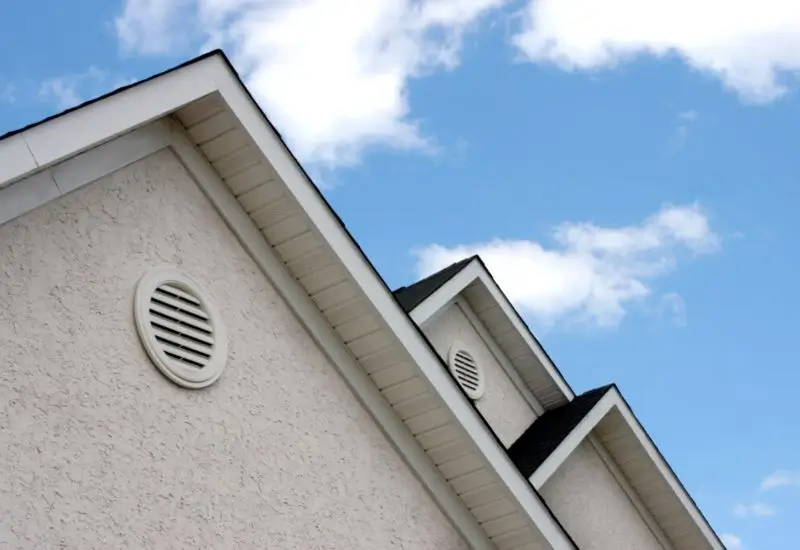
Roof Ventilation: Improving the Efficiency of Your Home
Proper roof ventilation is crucial for the endurance and efficiency of your home. A well-designed roof ventilation system ensures that air circulates effectively, reducing heat and moisture accumulation that can lead to costly damage. This guide will explore different roof ventilation types.
Understanding Roof Ventilation
Roof ventilation involves the flow of outside air through your attic or the top of your building, which helps regulate the internal temperature and moisture levels. A functional roof ventilation system consists of intake and exhaust ventilation to create balanced air pressure. Without proper ventilation, heat and moisture can cause rot in the roof structure, decrease insulation effectiveness, and even contribute to health problems due to mold growth.
Types of Roof Ventilation
There are several roof ventilation types, each suited to different architectural styles and specific needs. Common types include:
Ridge Vents: These vents are installed along the ridge line of the roof and are almost invisible from the ground. Ridge vents provide excellent exhaust ventilation.
Soffit Vents: Soffit vents are located under the eaves of the house to allow fresh air into the attic and work best when paired with ridge vents.
Gable Vents: These vents are installed in the walls of the attic to allow air to flow directly through the attic, usually under the roof’s peak.
Powered Attic Ventilators (PAVs): These electrically powered vents use a fan to help air circulation. They are effective but can increase utility costs.
SmartVent – A SmartVent is installed under the roofing system, which allows cooler air to enter under the shingle, through the 1” roof slit, and out the ridge.
Each type has its advantages and compatibility depending on the roof design and climatic conditions.
How to Install Roof Ventilators
Installing a roof ventilator can be a straightforward process, especially if you are replacing an existing unit. However, for new installations, it’s often best to consult with or hire a professional. Here’s a basic outline of the installation process:
Assessment: Determine the type and quantity of ventilators needed based on the attic size and local building codes.
Placement: Decide on the location. For example, ridge vents should run along the entire ridge of the roof to be effective, leaving 6” on each end uncut.
Installation: Cut an opening with appropriate dimensions. Install the vent according to the manufacturer’s instructions, making sure that it’s sealed and weatherproof.
Check for Balance: Ensure there is a balance between intake and exhaust ventilation. This might require installing additional soffit vents if not enough air is entering the attic.
Roof Ventilation Mistakes You Should Avoid:
- Neglecting Attic Ventilation: Attic ventilation can have a major impact on your home’s temperature regulation, so make sure your attic vents are properly installed and maintained.
- Blocking Roof Vents: When installing roof ventilation, it’s important to be aware of any existing roof vents and to make sure that nothing on the interior or exterior of the home is obstructing them to ensure proper airflow.
- Using the Wrong Type of Ventilation: To maintain proper airflow, it’s important to choose the right ventilation for your home. When in doubt, consult a professional.
- Insufficient Ventilation: Your Home’s ventilation requirements depend on the size of the building and your local building codes. Keep this in mind when selecting your vents.
- Covering Soffit Vents with Insulation: Insulation and ventilation go hand in hand in creating a comfortable home environment but be careful not to block soffit vents with insulation to avoid obstructing proper airflow.
Let Ferris Home Improvements Handle Your Roof Ventilation Needs
Effective roof ventilation is essential for preserving the structural integrity of your home, improving energy efficiency, and keeping your home comfortable. At Ferris Home Improvements, we understand the importance of choosing the right ventilation system for your home. Founded in 2004 in Delaware, Ferris Home Improvements has grown from a one-man operation to a full-service team with over 40 years of experience in home improvements. We pride ourselves on delivering exceptional craftsmanship and superior customer service across Delaware and parts of Pennsylvania and Maryland. Don’t compromise on the health of your home—let Ferris Home Improvements ensure your roof ventilation is handled by the experts. Contact us today online or at 302-998-4500 to enhance your home’s value and your family’s comfort.
